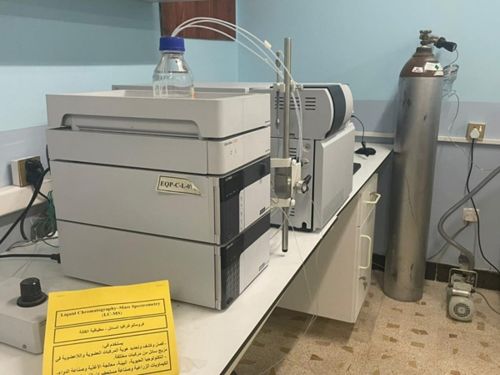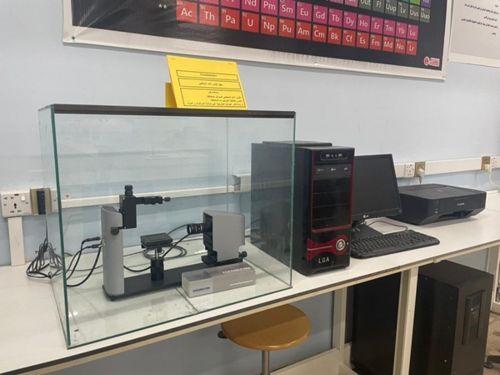The President of the University of Samarra opens a modern research laboratory at the university
Under the direction and guidance of the President of the University, Prof. Dr. Sabah Allawi Al-Samarrai, and supervision and follow-up of the Dean of the College of Applied Sciences, Assistant Professor Dr. Aiser Saleh Muhammad, in a qualitative step within the path of advancement that the University of Samarra seeks at various levels, the central laboratory was opened after completing the necessary procedures for its operation and the laboratory equipment attached to all the efforts and qualification by a specialized committee headed by Dr. Harith Jamil.
The reconstruction process in its early stages included providing many laboratory reliability requirements and good laboratory specifications, such as adding vacuums equipped with a chemical filtration system for gases and fumes to preserve the environment and prevent pollution and equipping the laboratory with fire extinguishers in addition to establishing a warehouse outside the laboratory to store the cylinders of ethylene and oxygen gas and with thermal insulation specifications.
While the second phase included maintenance, operation, and calibration of the equipment in the laboratory
The third phase was concluded with the installation and connection of the solar energy system to provide the laboratory with clean and environmentally friendly electrical energy and to ensure the continuation of the electrical current to the devices.
It is expected that this laboratory will be a magnet for many researchers and graduate students from all universities and research centers in Iraq, as it contains advanced equipment at the country level,
At the end of the opening, the President appreciated the efforts of those in charge, starting with the Dean of the College, the assistants, and the team.
He urged researchers to invest in this lab to supplement scientific output with rigorous scientific research.
We mention to the researchers some laboratory devices.
—————————–
Liquid Chromatography-Mass Spectrometry
(LC-MS)
used in:
• Separation, detection, and identification of organic and inorganic compounds in a liquid mixture of different compounds.
• Biotechnology, environment, food processing and medicine industry, agrochemical and cosmetic industry.
Origin: Japanese Shimadzu
Gas Chromatography-Mass Spectrometry
(GC-MS)
used in:
• Separation and detection of volatile organic compounds in a gaseous mixture of different compounds.
• Environmental, pharmaceutical, petroleum, chemical, medical, food science, and many other fields.
Origin: Japanese Shimadzu
Atomic Absorption Spectroscopy
used in:
• Diagnose the presence of heavy metals in the samples.
• Diagnose the extent of contamination of samples with toxic heavy metals.
• Quantification of elements and heavy metals.
Origin: Japanese Shimadzu
Nuclear Magnetic Resonance
(NMR)
used in:
• Qualitative diagnosis of unknown compounds in samples.
• – Diagnosis of the active groups in the unknown organic compounds.
• Determine the spatial composition of new compounds. Unknowns.
Origin: Thermo – USA
CHNSO-Elemental Analysis
A carbon and hydrogen element analyzer of nitrogen, sulfur, and oxygen
used in:
• Diagnose the presence of the essential elements in the samples.
• Quantification of the basic elements in the samples.
• Diagnosis of unknown organic compounds.
Origin: Japanese Shimadzu
High-Performance Liquid Chromatography
(HPLC)
used in:
Quantitative checks.
• For quality checks.
• Determination of chemical concentration.
• Diagnose unknown items
Origin: Japanese Shimadzu


































